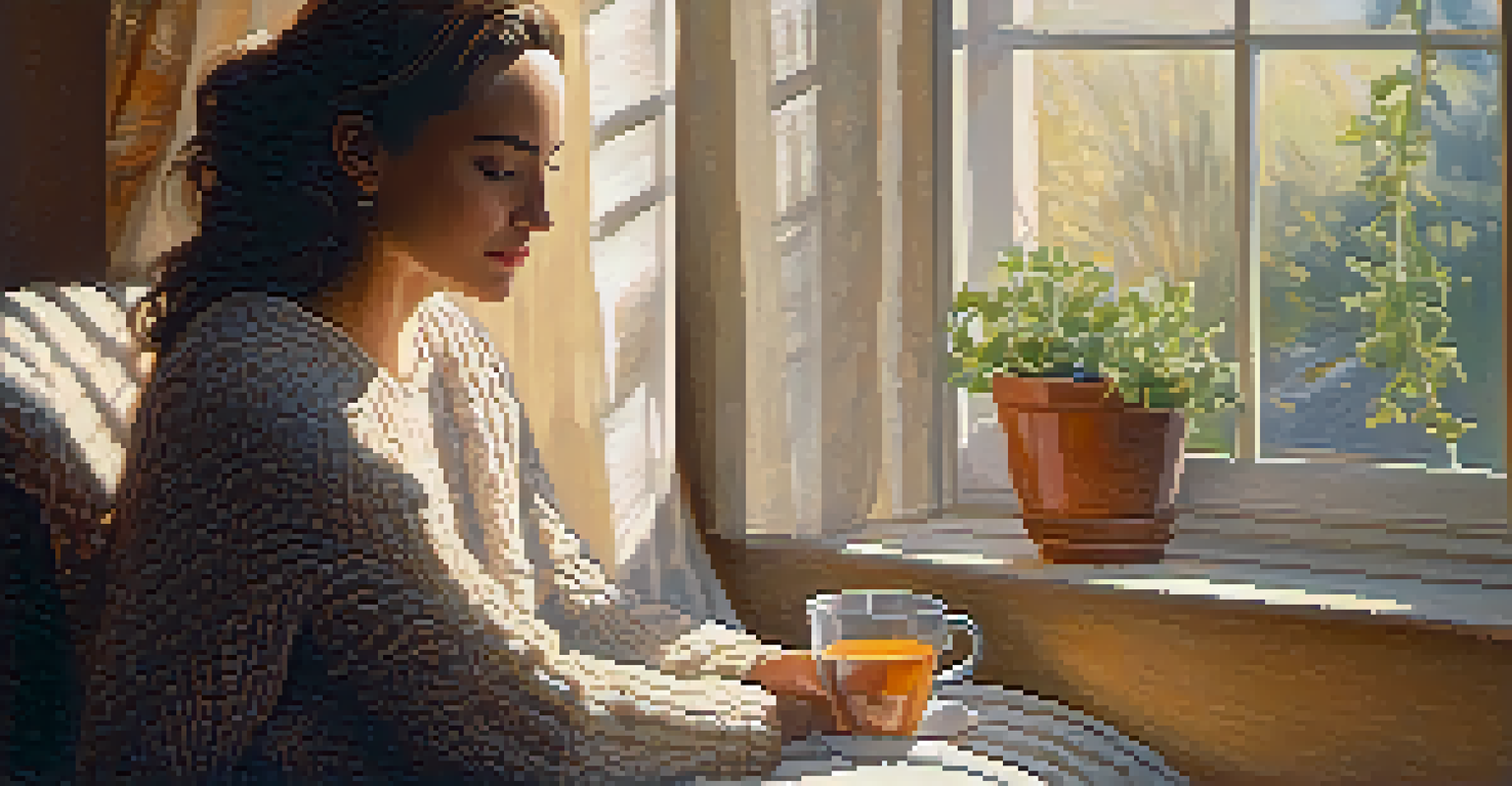Historical Perspectives on Light in Painting Techniques

The Role of Light in Early Artistic Expression
In the earliest days of painting, artists relied on natural light to illuminate their subjects. This reliance shaped their compositions, often leading to outdoor scenes that captured the beauty of nature. For example, cave paintings from prehistoric times show how light interacted with the natural features of rock surfaces.
Light is the first element of photography. It is the foundation of all images and the key to capturing emotion.
Artists like Giotto in the late Middle Ages began to experiment with light to create depth and dimension. By using shadows and highlights, they could convey a sense of realism that was unprecedented for their time. This marked a significant shift in how light was understood and utilized in art.
The techniques developed during this period laid the groundwork for future advancements. As artists began to see light not just as a source of illumination, but as a tool for storytelling, the possibilities in painting expanded dramatically.
Renaissance Innovations: Chiaroscuro and Sfumato
The Renaissance was a turning point for the portrayal of light in art, largely due to techniques like chiaroscuro and sfumato. Chiaroscuro, which involves strong contrasts between light and dark, allowed artists to create a three-dimensional effect on a two-dimensional canvas. This technique was famously used by masters like Leonardo da Vinci and Caravaggio.

Sfumato, on the other hand, is a technique that softens edges and creates a smoky effect, allowing for a more gradual transition between colors and tones. This method contributed to the lifelike quality of portraits, as seen in da Vinci's 'Mona Lisa.' Artists began to explore the emotional impact of light as well, using it to enhance the mood of their works.
Light Shapes Artistic Expression
Throughout history, artists have utilized light not just for illumination but as a fundamental tool for storytelling and emotional impact.
These innovations not only showcased the technical skill of the artists but also deepened the viewer's emotional experience. Light became a character in the artwork, guiding the viewer's eye and influencing their feelings.
The Baroque Period: Dramatic Use of Light
The Baroque period introduced a dramatic flair to the use of light in painting. Artists like Rembrandt and Caravaggio took chiaroscuro to new extremes, creating intense emotional scenes that drew viewers in. The stark contrasts in light and shadow became a hallmark of this era, amplifying the drama and tension within the artwork.
Color is the keyboard, the eye is the harmonica, the soul is the piano with many strings.
In this period, light was often used not just to illuminate subjects but to create a narrative. For instance, Caravaggio's use of spotlighting focused attention on key figures, enhancing the storytelling aspect of his paintings. This technique made the viewer feel as if they were part of the scene.
Baroque artists understood the power of light to evoke emotion and convey complex themes. By manipulating light, they could highlight virtues, vices, and the human experience in a profound way, making their works resonate with audiences.
Impressionism: Capturing Fleeting Light
The Impressionist movement marked a radical departure from traditional painting techniques, as artists sought to capture the ephemeral quality of light. Painters like Claude Monet focused on how light changed throughout the day, experimenting with color and brush strokes to represent the fleeting nature of sunlight. This was a revolutionary approach that emphasized perception over realism.
Impressionists often painted en plein air, or outdoors, allowing them to depict the immediate effects of light on their subjects. This led to vibrant color palettes and dynamic compositions that celebrated the beauty of the moment. For example, Monet's 'Impression, Sunrise' is a quintessential representation of how light can transform a scene.
Renaissance Techniques Revolutionize
Innovative techniques like chiaroscuro and sfumato during the Renaissance allowed artists to create depth and evoke emotion through their use of light.
This emphasis on light and its transient qualities influenced countless artists and movements that followed. The Impressionists opened the door for future explorations of color and light, demonstrating that art could capture not just what is seen, but how it is felt.
Post-Impressionism: Light and Symbolism
Following Impressionism, Post-Impressionist artists began to explore light in new ways, often imbuing it with symbolic meaning. Artists like Vincent van Gogh used bold colors and dynamic brushwork to express emotional depth through light. His works, such as 'Starry Night,' illustrate how light can convey feelings of turmoil and tranquility simultaneously.
These artists moved away from mere representation and began to use light as a tool for conveying deeper messages. The way light interacted with color allowed for the exploration of themes like the passage of time and the complexity of human emotion. The vibrant use of light became an essential part of their visual language.
By pushing the boundaries of how light was perceived, Post-Impressionists laid the groundwork for modern art movements. Their explorations contributed to a richer understanding of light as a powerful element that could evoke complex emotional responses.
Modernism: Redefining Light in Art
As the 20th century approached, modern artists began to redefine the role of light in their works. Movements like Cubism and Abstract Expressionism shifted focus from representation to abstraction, where light played a crucial role in shaping form and space. Artists like Pablo Picasso and Jackson Pollock experimented with how light interacted with color and composition, creating entirely new visual experiences.
In modern art, light is no longer just a tool for highlighting subjects; it becomes a fundamental part of the artwork itself. For instance, the use of reflective materials or unconventional light sources challenged traditional notions of painting. This exploration expanded the possibilities of what art could be.
Modern Art Redefines Light's Role
In contemporary art, light has evolved into an interactive medium, challenging traditional perceptions and inviting audience engagement.
The redefinition of light in modernism encourages viewers to engage with art in innovative ways. It invites them to contemplate not just the visual aspects, but also the conceptual meanings behind the use of light, fostering a deeper appreciation for the artist's intent.
Contemporary Art: Interactive Light Experiences
Today, contemporary artists continue to push the boundaries of light in painting and beyond. With advancements in technology, light has become an interactive element in many artworks. Artists are incorporating digital projections, neon lights, and even virtual reality to create immersive experiences that engage viewers on multiple levels.
This shift has transformed how we experience art, allowing for an exploration of light that goes beyond traditional methods. For example, artists like Olafur Eliasson use light to manipulate perception and create environments that invite audience interaction. These works challenge viewers to rethink their relationship with light.

Contemporary art emphasizes the versatility of light, showcasing it as a medium that can convey complex ideas and emotions. This ongoing evolution reflects the ever-changing nature of art itself, making light a vibrant topic of exploration in the art world.